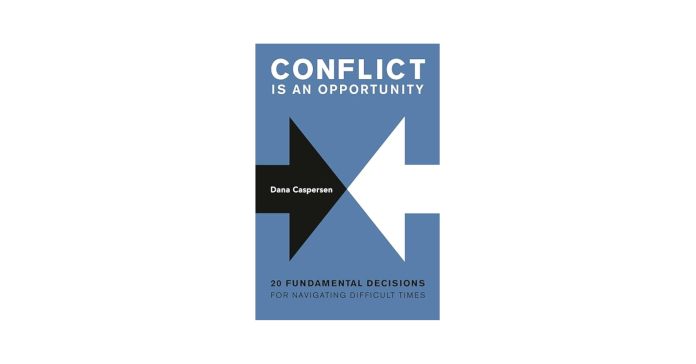
What is my request?
A request is not a sign of submission; it is an empowering investigation tool.
Sometimes, asking if a person is willing to do something, rather than telling them that they should do it, can feel like you are putting yourself in a precarious or disadvantaged position by handing over power to the other person. However, that person already has the power to decide what they will do.
What you are doing by inquiring about willingness is finding out the lay of the land. You are telling people what matters to you and finding out what they care about by learning what they are, are not, willing to do, and why. In doing so, you engage their power in the conversation by recognizing and respecting their ability to choose. To acknowledge the needs or interests of another in this way is not to condone their actions or plans. It is to find out why they move so that you can consider the possible new motion. Making a request is an act of curiosity that helps in this process.
Practice differentiating between a request and a demand:
A demand frames any response from the other person as either compliance or defiance.
Making a demand is an attempt to control the other person/people, and boxes you into a single strategy, rather than letting you stay primarily connected to the needs and interests that strategy was intended to meet. If the other person is unwilling to entertain your demand, then you’re stuck trying to force through your single strategy, because you’ve framed the action of changing your course as failure. It is sometimes possible to make demands that force people to do things even when they are not willing. But this often results in anger, pain, and thoughts of revenge, sending you on an unstable, unsustainable path.
A request, on the other hand, is an analytical tool.
A request illuminates where you are and what motion is possible in that relationship, action, and need landscape. Often, when it seems like what we want should be evident to the other person, it isn’t because we have not clearly expressed ourselves. Instead, we’ve only vented about our frustrations, disappointment, or anger, or attacked others for what we see as their failings, without making a specific, doable request that illuminates our interests and, through their response, the interests of the others involved. Connecting a request to our emotions and interests helps others understand where we are coming from and where we want to go.
Practice being willing for the other person not to accept your request.
This willingness on your part frees you to remain connected to your broader purpose, instead of being attached to just one particular strategy or merely reacting to the other’s response. If someone says no to a request that you offer, this is not the same thing as saying no to you as a person; it is information about what they need and which issues are essential to address.
A first request can be as simple as asking if the other person would be willing to discuss the issue.
For example:
“I’d like to revisit our agreement around scheduling. It sounds like it hasn’t been working well for everyone. How about we set a time to talk, maybe later this week?
or
“It seems like things have been tense between us lately. I’d love to grab a coffee or something with you and talk briefly about what’s been happening. What do you think?”
As the conversation continues, requests can become more specific to help unfold the situation.
The proposal to focus your attention on requests rather than demands is not a suggestion to let others determine the trajectory of the situation or to accept the harmful action of others. Developing a willingness to make a request instead of a demand is a recognition that it’s necessary to know what people are, and are not, willing to do—and why—to understand what actions you can effectively take, and what a situation might look like where people, relationships, and ideas can thrive.
As you move through difficult conversations, check back to see if your requests are demands or attacks in disguise. If so, go back to the drawing board. Determine what request would speak to your needs and the reality of the other person’s freedom to choose. Avoid making requests that involve the other person changing their character.
Stick to describing the specific changes in action or situation you want to see and why that matters to you.
If the person rejects your request, try using that as an opportunity to learn more about what’s happening. With a clear intent to understand the situation better, do not retaliate or jam through your strategy. The point here is not to let the other person run all over you but to clarify the situation’s dynamics.
For example:
Ask what the other person’s concerns prevent them from agreeing to your request.
In a more personal setting:
“It sounds like you’re not interested in talking about this?…[listen to their response]…Is it that you don’t think it’s important or that you’re concerned about what might happen if we try to have that conversation?”
In a more formal setting:
“So, it sounds like you’re thinking that a conversation on this topic would just turn into another useless interdepartmental argument, and you’ve had enough of those, right?…[listen to their response]…What are your particular concerns about what might happen?[listen]…Ok, so there are challenges to getting a dialogue like this off the ground in a useful way. At the same time, I think this will be important for us to deal with in the long term [interest]. I’m wondering about the possibility of having an initial conversation to look at what would help the group have a productive dialogue. For instance, we might set clear goals for the conversation and some ground rules to help us stay focused. Would that be a conversation you’d be willing to have [new request]?”
In all of these situations, the point is not to find the right words or to manipulate the other into accepting your point of view. Instead, it is to build your ability, even in stressful situations, to adopt a curious mindset that lets you offer requests as tools to find out what’s happening, what people are feeling and wanting, and why, and to listen to the response you receive. Whether or not the other person is willing to accept your request, their response will usually highlight the energy, emotions, and interests that can fuel your collective motion toward a productive way forward.
Try this even if you dislike, distrust, or disagree with the other person. We need the other person’s information to know what will work. Solutions based on information from only one side of a conflict are rarely effective. Develop your ability to make requests with real curiosity, even in stressful situations, to increase your understanding and move toward constructive change.



